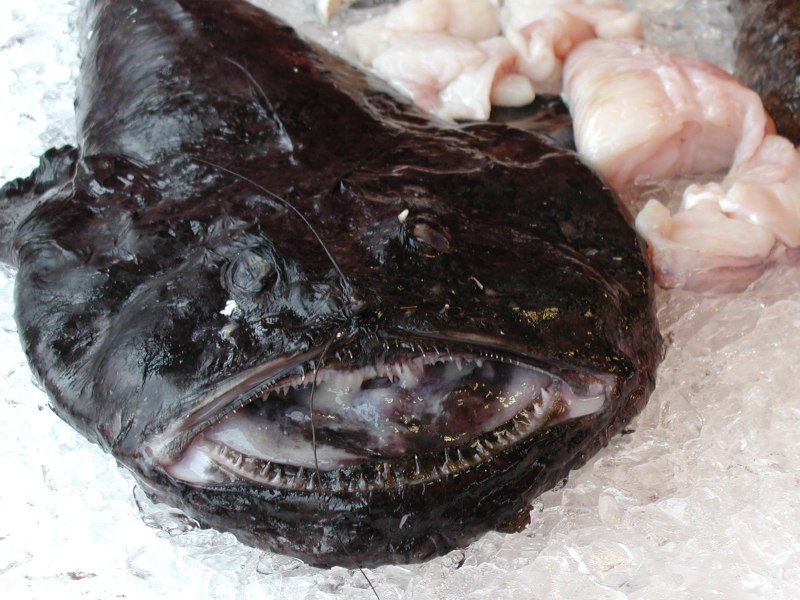Maine Seafood Guide – Monkfish

Species Description
Season
Status
Regulatory Authority
Harvest Method
Recreational Harvest
Health Benefits & Risks
Buying & Preparing
Brands
Certifications
Links
►Species Description
Monkfish Lophius americanus
also known as goosefish, angler fish
Wild.
Monkfish live on the bottom of the Atlantic from the Gulf of St. Lawrence to North Carolina. They are brown above with a white belly. Often referred to as “all mouth,” the monkfish has a narrow, tapered body but a broad flat head with an enormous mouth lined with long, needle-like teeth. Monkfish can grow to a length of over four feet and weigh up to 50 pounds. An “angler fish,” the monkfish uses a fleshy appendage dangling from its head as “bait” to attract prey.
►Season
November through June, with a peak in fall.
►Status
Monkfish are not overfished nor is overfishing occurring (more from Fishwatch.gov).
►Regulatory Authority
Jointly managed by New England and Mid-Atlantic Fishery Management Councils.
►Harvest Method
►Recreational Harvest
Occasionally, anglers who are using live bait in search of other groundfish haul up a monkfish. Extra care should be taken when handling these fish because their bite can be dangerous!
Size limit is 17 inches; there is no harvest limit.
►Health Benefits & Risks
Monkfish is a low-fat, low-calorie source of selenium, but is lower in omega-3 fatty acids than other fish. Monkfish is relatively low in mercury.
►Buying & Preparing
Monkfish are typically sold as tails, livers, or whole gutted fish. The firm, boneless white tail meat is called “poor man’s lobster” for its suggested flavor. Livers are eaten as sushi (ankimo) and most are exported to Asia.
►Companies, Brands, and Labels
None.
►Certifications & Verifications
None.
►Links
- Read an article about monkfish in Wild Catch magazine
